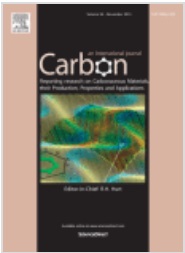Anthracite, with carbon content of 93.5 wt% and 2.7 wt% of hydrogen, was studied by electron paramagnetic resonance (EPR), electrical conductivity and static
magnetic susceptibility measurements, in the temperature range of 2–300 K. The EPR measurements were carried out on powder and bulk samples. The EPR signal of the thin bulk sample represented a single Lorentzian line, while the spectrum of the powder samples was composed of two Lorentzian lines having identical
g-factors and different linewidths. The study of the temperature dependencies of the linewidths revealed that the narrow component of the
powder spectra corresponds to the signal of the thin sample. The intensities of all EPR signals, proportional to the dynamic paramagnetic susceptibility, showed Curie-type dependency. The static magnetic susceptibility was dominated by the Pauli-type paramagnetism. This led to a conclusion that paramagnetism of anthracite is due to the conducting electrons, but part of them become isolated due to the granular structure of the material. In EPR, these non-interacting electrons yield a Curie-type contribution to susceptibility. The two-component structure of the powder EPR spectra was explained by the size distribution of grains and a more effective scattering of conduction electrons by the surface roughness in smaller grains.

